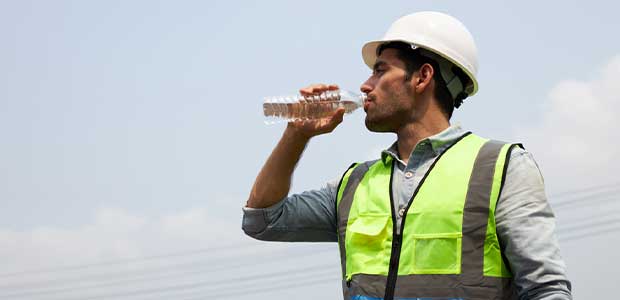
Summer Heat and More: An All-Hazard Approach to Working Outdoors
Employers and employees need to watch out for more than just hot weather during the summer.
- By Karen D. Hamel
- Mar 01, 2023
After the ice and snow begin to melt, but before the daffodils start blooming and the faint murmurs of folks yearning for warm summer weather usually start. For some, it means vacations, relaxation and time with family. For many employees, however, it means working in high heat and humidity.
With OSHA and several industry groups engaged in rulemaking and the creation of consensus standards to help protect both indoor and outdoor workers who still need to work regardless of the heat, it can be easy to focus solely on creating plans to help prevent dehydration and heat-related injuries. But summer brings other risks that may need to be addressed as well.
Recognizing all of the hazards that summer work presents and including them in planning efforts help to reduce risk. It will also help with training and emergency response efforts.
Currently, federal OSHA does not require employers to create a written plan that addresses how workers will be protected from summer hazards. However, employers do have a responsibility to evaluate workplace hazards—including all types of hazards that come from working outdoors and in summer weather.
Some locations may have similar hazards while others have scenarios that are unique to the facility. Some risks may be specific to the day and time that work is being performed. Involving employees in the planning process is a proven way to help ensure that all known summer hazards are addressed.
Heat and Humidity
While some summer hazards may come and go, heat and humidity are likely to be daily issues that typically can’t be engineered out of the process. Recognizing heat and humidity as hazards and planning for them is important because each year, an average of 32 employees die from heat-related injuries, according to the Bureau of Labor Statistics (BLS). Many of these fatalities are new or temporary workers who have not been properly acclimated to working in hot and humid conditions. Written plans that address work schedules, buddy systems, hydration breaks and supervisors’ duties during hot weather work protect not only these employees but also the more seasoned ones.
Although a federal rule has not been finalized, guidance is available from the National Institute of Occupational Safety and Health (NIOSH), the American Conference of Governmental Industrial Hygienists (ACGIH) and other industry groups. This guidance can help facilities establish appropriate work/rest cycles based on the temperature, humidity and the types of protective clothing employees are wearing. There is even an app that can be downloaded to any smart device to let employers, supervisors and employees know the heat index in any area of the U.S.
This article originally appeared in the March 1, 2023 issue of Occupational Health & Safety.